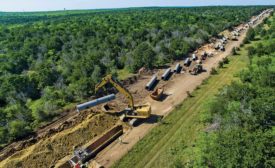Home » water
Articles Tagged with ''water''
Environment
Michigan Agrees to $600-Million Settlement With Victims of Flint Water Crisis
State has agreed to pay homeowners and businesses for lead-tainted water
Read More
Tech
Viewpoint: Denver Water Turns to Digital Tracker for Lead Service Line Replacement
64,0000 to 84,000 homes in Denver may have lead pipes that'll need replaced
Read More
Kaskaskia, an Illinois Island Community in the Mississippi River, Still Can't Assess Flood Damages
The island, the first capital of Illinois, was cut off from the mainland by flood water from April to July
Read More
The latest news and information
#1 Source for Construction News, Data, Rankings, Analysis, and Commentary
JOIN ENR UNLIMITEDCopyright ©2024. All Rights Reserved BNP Media.
Design, CMS, Hosting & Web Development :: ePublishing











